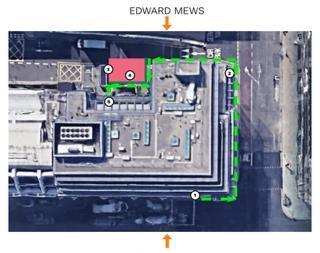The continued success of the Cheshire Oaks factory-shopping mall, Ellesmere Port and the recently opened Trafford Centre poses the greatest threat to retail vibrancy on the north Wales coast.
In addition, Broughton Shopping Parc, to the west of Chester, just over the Welsh border, opens in July. It provides nearly 27,870 sq m (300,000 sq ft) of retail accommodation and will undoubtedly draw in business from Chester.
All these centres offer a mix of shopping, including a high proportion of fashion. Their impact will be felt both on the high street and within established retail parks across north Wales.
Nationally, the out-of-town market has been buoyant over the past decade, with the rental warehouse index rising by 71% between 1992 and 1997.
However, the scale of this growth is far from uniform. Locations such as Wrexham have seen an increase in the region of only 35% over the same period, while Broughton has risen by 67% within 18 months. In contrast, Flintshire retail park rents have grown by 8% in the past three years.
More westerly towns have suffered less. Bangor, for example, has seen a rise of around 50% in the five years to March 1997 and rents now reach about £97/sq m (£9/sq ft).
Wrexham faces the stiffest challenge and has the most to lose from its proximity to Chester and particularly Broughton Shopping Parc.
Llandudno, though, will retain its position as the most affluent town on the north Wales coast. This is demonstrated by Marks & Spencer's £8m extension to the main trading store in the town, combined with its intention to continue trading from its other store on Mostyn Street.
Retailing activity on the western side of the north Wales coast is focused on Bangor. The town is starting to feel the benefits of additional spend from the extended catchment area provided by improvements to the Caernarfon link road and the A5 across Anglesey.
Bangor's greatest limiting factor is the topography, which restricts the development of good-quality retail floorspace on the high street. While the Deiniol Centre has been refurbished recently, proposals to substantially improve the Wellfield Centre will be the most significant step in providing large floor plates to satisfy demand.
Offices
The office market across north Wales revolves around out-of-town business parks, which have achieved almost full occupancy rates and have additional proposals in the pipeline.
This is in contrast with town and city-centre space, where take-up is very low, particularly from larger users. This is perhaps a reflection of the lack of accessibility and limited car parking. Accordingly, the A55 is a lifeline for business and office space development across north Wales.
The supply of office space in out-of-town parks now exceeds 92,902 sq m (1m sq ft), principally at Chester Business Park and Park West Business Park in Chester, and St Davids Park in Ewlow.
To a lesser extent, business parks at Wrexham, St Asaph, Menai, Bangor and Flint have played an important role and have drawn larger users out of town centres.
Rentals, however, differ greatly. The dominant parks are achieving up to £172/sq m (£16/sq ft) and smaller parks such as St Asaph and Acorn Business Park in Flint are achieving about £75-85/sq m (£7/8/sq ft).
Demand for in-town space is concentrated on smaller suites, typically 100-200 sq m (1,000-2,000 sq ft), primarily from small local businesses and professionals.
A breakdown of space let in Chester city centre over the past three years shows a 65% take-up from local businesses and only 15% from national companies.
In comparison, the out-of-town business parks are characterised by demand from national and international businesses. In the last three years, 78% of space has been taken by such companies. An example is MBNA, with 28,000 sq m (300,000 sq ft) at Chester Business Park.
In Chester alone, prime rents achieved on business parks are 60% ahead of those achieved within the Town Centre and this is a trend continued across the north Wales market.
Industrial
Industrial development is more focused on two massive industrial sites at Deeside and Wrexham, which individually serve the east/west and north/south corridors, respectively.
There are some piecemeal developments along the line of the A55, concentrated mostly around Llandudno Junction/Colwyn Bay, but the main focus for the regional and major occupier market is primarily Deeside Industrial Park.
Over the past three years, Deeside Industrial Park has seen take-up exceeding 27,000 sq m (300,000 sq ft). With substantial land availability, demand has been met by supply, and rental levels have remained static at around £43/sq m (£4/sq ft).
Rents are beginning to harden. The opening of the third Dee crossing and improvements to the Queensferry bypass will deliver continued development and rental growth.
Wrexham provides about 405ha (1,000 acres) of industrial park, primarily servicing the north/south corridor. This is another Welsh Development Agency success story – it has 150 occupiers. Steady take-up is predicted, with rental levels comparable with Deeside Industrial Park.
Postscript
Bruce bott, partner, Mason owen
Topics
Cheshire & North Wales - Regional Survey
- 1
- 2
- 3
- 4
- 5
- 6Currently reading
North Wales
- 7
- 8





























